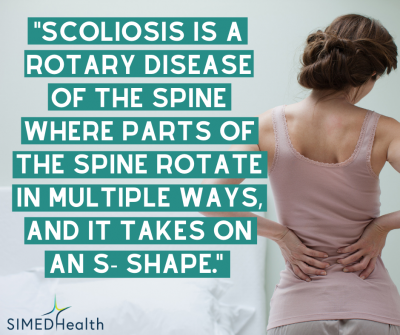
June is Scoliosis Awareness Month, and we talked to interventional pain management and rehabilitation medicine physician Dr. Jesse Lipnick all about it and its treatments.
What is scoliosis?
Scoliosis is a rotary disease of the spine where parts of the spine rotate in multiple ways and can cause an s-shape. The sections of the spine rotate regarding one another. The vital thing to determine is whether or not it will be progressive. If the disease develops when the patient is a child or elderly, it is much more likely for it to be progressive or permanent. Dr. Lipnick says elderly patients have an even higher risk because of osteoporosis and the degeneration of bone strength. The cause of scoliosis in adolescents is still unknown.
What are the symptoms?
- Pain
- Change in posture
- Humpback
- Curved pelvis
- Pinched nerves
- Interference with other organs
- Premature arthritis
What is the treatment process?
Dr. Lipnick says that it mostly depends on the type of scoliosis that the patient has. Congenital scoliosis, which is when a patient is born with the disease, will need to be fixed with surgery, but that is very rare. Idiopathic, or when the disease begins during adolescence, which is the most common type, is typically observed and if it starts to get worse, the patient gets fitted for a brace. Physical therapy is also a standard treatment option, along with medications that can block joint pain and numb nerves, especially for those with adult degenerative scoliosis.
Living with scoliosis:
Daily, people living with this disease have to deal with a lot of pain. Most cases are fully functional, but their lives are a little more complicated. Dr. Lipnick says, depending on the severity, patient's clothes don't fit right, it's hard for them to sleep, sitting in chairs can be tough, and so on. Most don't realize it, but even a small change in our posture can affect us because most things are built around having a straight spine.
If you have this disease and would like to schedule an appointment with Dr. Lipnick, click here.